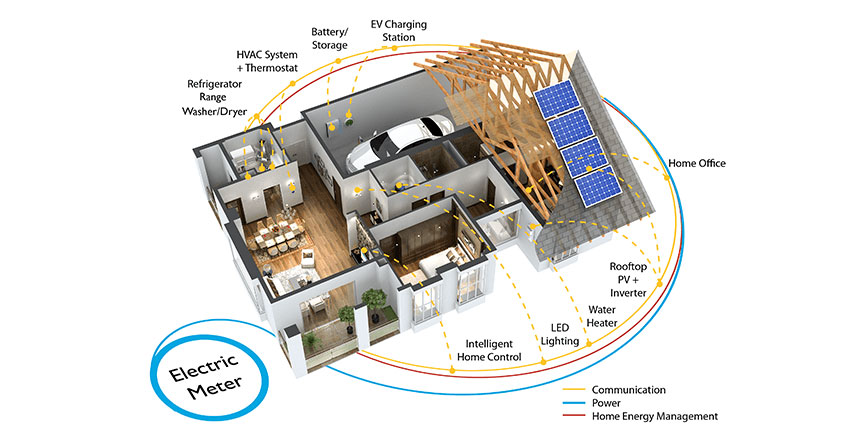
A series of laboratory tests were conducted on foresee using one of the “homes” in NREL’s Energy Systems Integration Facility. NREL researchers simulated how a house with a full complement of smart devices would run during a 24-hour span – first without the benefit of foresee’s automation or the storage battery to establish a baseline, and then with the software running based on user preferences. Image credit: Josh Bauer/NREL
A home energy management system that could take the term “smart home” to a new level has been named a top-100 innovation by R&D Magazine.
Colorado State University researchers played a significant role in developing the technology, called “foresee,” recently crowned a 2018 “R&D 100” award winner. The international competition recognizes the 100 “most exceptional innovations in science and technology from the past year.”
Foresee software relies on user preferences to control, integrate and coordinate the energy consumption of a home’s appliances and electronics. Essentially, it allows smart appliances to talk to each other and reach a common goal, whether that’s energy savings, comfort or convenience.
Collaborative effort
The foresee project was led by scientists at the National Renewable Energy Laboratory, in collaboration with Sid Suryanarayanan, professor in the Department of Electrical and Computer Engineering, and Pat Aloise-Young, professor in the Department of Psychology. The researchers partnered with Bosch Electronics to test the product.
“This was truly an interdisciplinary effort,” Suryanarayanan said. “My own research on energy management has always been driven by math and engineering concepts. When you’re solving an engineering problem, you’re going to have an engineer’s perspective. But the product you’re developing is going to be used by anyone who owns a home. That’s why the behavioral psychology piece was critical.”
Foresee asks users to rank what’s most important to them about living in their home, then takes those preferences into account and automatically adjusts devices.
“One of the elements that makes foresee unique is that it takes into account the occupant’s values,” Aloise-Young said. “Rather than employing a one-size-fits-all approach, foresee attempts to mirror the occupant’s decision-making.”
Decision-making algorithm
The brains of the software is a sophisticated decision-making algorithm, earlier versions of which Suryanarayanan and Aloise-Young worked on. Survey data from more than 1,000 households fed into the algorithm, blending subjective information such as people’s preferences with objective information such as electricity price forecasts.
The researchers had the NREL team quantify three different such algorithms while testing the foresee devices. They participated in a live demonstration of the product at the NREL Energy Systems Integration Facility in Denver last year.
The R&D 100 Winners were selected from among a group of finalists who were previously revealed in the October issue of R&D Magazine.